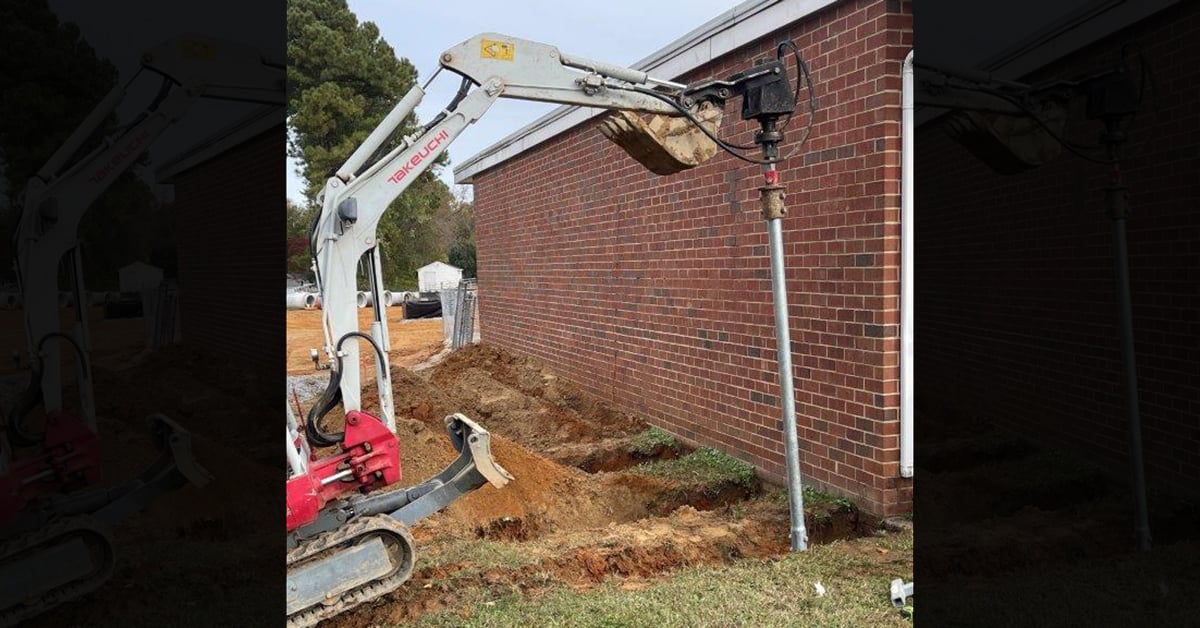If you are turning your head the other way when it comes to building your foundations on unstable soils, you may be in for a big and expensive surprise within your structural warranty window. Investing in your foundation at the beginning of new construction will pay off.
Though post tension, thicker grade beams and other many slab/foundation methods may suffice, your home could be on a lot with soils that require further stabilization. The antidote is building on a deep foundation helical pile placed at or under your structure foundation and ancillary structures (e.g. pools, walls, decks, earth retention, etc.). The rationale is this methodology transfers the structure’s weight to a location within the earth below the suspect soil. This is known as a “deep foundation.”
Traditional and proven methods involve auguring a hole to a depth specified by a geo-tech and designed by a structural engineer. What you may not know is there exists a much more efficient method than traditional deep foundation methods, especially in relation to time savings, mobilization of equipment costs, and pure process involved in disbursement/disposal of disturbed soils.
The technology is steel anchoring in the form of helical or resistant piers. Helical piling, a 183 year-old tested/proven technology, uses a helix configuration as its lead section. It acts like a wood screw when it is installed. It screws into the ground as is with no need to drill or auger a hole prior to installation. It is installed until it burrs into what is called the load bearing strata (the depth of the load bearing strata varies by geography and location). Once the helices are embedded (which can be determined by the torque gauge on an installation tool), you are done. That pile is ready for immediate loading. Unlike common concrete-based or friction piling solutions, when installed properly, the helical pile will not be subject to future movement downward or upward (heave).
In addition, since there is no concrete curing time required, the helical pile can be loaded immediately.
In the end, when you compare a helical deep foundation solution to concrete-based solution, the financial savings weigh far in your favor. Here is the value proposition of a steel anchor solution:
Building efficiencies usually equal five days or more in overall time savings (compared to an on-site concrete solution)
-
-
- Immediate loading of piers (no curing time required)
- No auguring of a hole or need to spread/remove soils from the site
- No casing required in high water table areas
- Simple installation equipment (e.g. Bob Cat, Skid Steer)
- Minimal mobilization of installation equipment equals time savings
- Seismic advantages
- Reduction or elimination of back-end remedial repair (which is extremely costly) and warranty claims
- You often can build structures on desirable land parcels with suspect soils
Finally, using a steel peering solution can save you on the bottom line. Though situations vary based on soil conditions and depth required, on a 2,200 square foot home, the net savings in hidden costs can be thousands of dollars!
CHANCE Foundation Solutions has a network of distributors in North America and a network of Certified Installers around the world! Find your local expert today and see if helical piles are the right solution for you.

